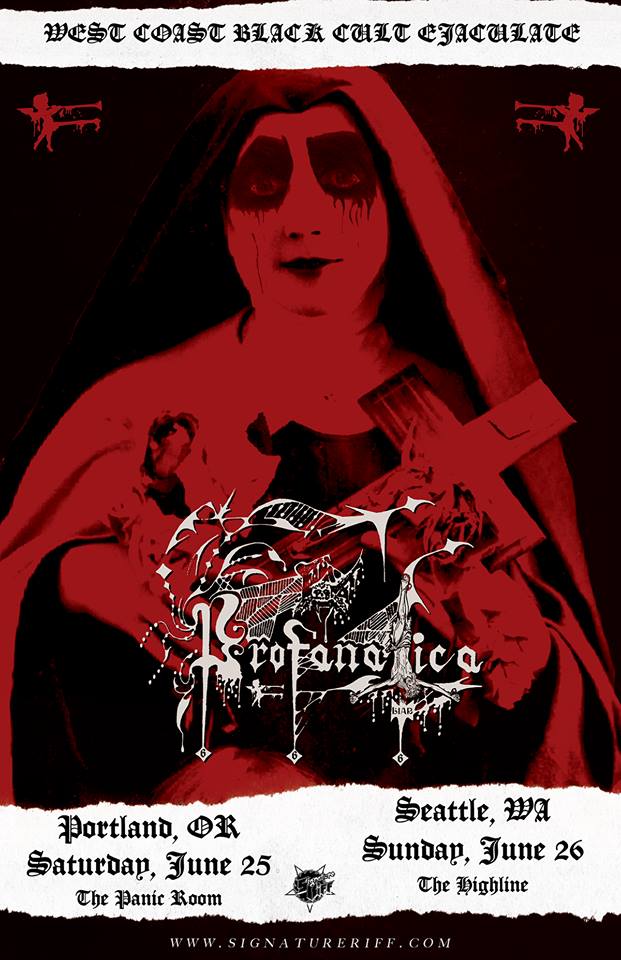
Profanatica are touring this summer.
3 CommentsTags: Black Metal, death metal, hells headbangers, news, paul ledney, profanatica, tour dates, upcoming tours

Profanatica are touring this summer.
3 CommentsTags: Black Metal, death metal, hells headbangers, news, paul ledney, profanatica, tour dates, upcoming tours
Profanatica‘s new album, The Curling Flame of Blasphemy, has been released early on tape by Hells Headbanger Records for jaded eighties headbangers with old cars and cassette decks. Profanatica being one of the few bands still releasing quality material in this age of rehashed mainstream pandering makes this worth checking out. A higher quality CD version for the audiophiles is coming out in late May and the LP for the hipsters in early August.
21 CommentsTags: Black Metal, compact cassette, death metal, hells headbangers, news, paul ledney, profanatica
Article by David Rosales.
I. The Myth of Progress
Each epoch in human history is affected by the myths that define its own attitude; myths that could be defined as foundational illusions on which the dogmas of the time are based. For us, that myth is progress itself and the consequent air of superiority that comes with it. Having arrived at a postmodernist stage, this criticism of modernity is nothing new, but at the same time, nothing has been done about it so that we still suffer the same symptoms. This is one of the maladies of postmodernism: an even greater contempt for other epochs in its supposed abstraction from prejudices, which creates an illusory special place whence a new prejudice against everything and all is provisioned, whence nothing is actually properly addressed or solved only haphazardly patched over.
We call it the myth of progress not because we believe that improvement is impossible, but because the word has become so much a staple of modernity that it is assumed that our “progress” applies to many more areas than it actually does. The only clear advantage we have over humanity in the past is our clear technological advantage, summarized in more precise knowledge of scientific mechanics1. We have a bigger sword in hand and know how to use it.
The average, modern man also considers we have a moral advantage over the barbarism and superstition of the past. He does not consider his own moral assumptions as spurious. That is always reserved for the other. This contradiction is especially obvious in the secular humanist values that currently dominate the sphere of Western politics and popular opinion. Religion (by which they are usually referring to Christianity and sometimes to Islam if the critics themselves be Christian) is vilified as leading to a dulling of the senses; Catch phrases originally belonging to the Marxist left (“opium of the masses”) are embedded into popular consciousness.
Both the left and right base their ideologies on different interpretations of the modern myth of progress and the false sense of moral superiority thereof. The humanist values that both presume to uphold were born out of Christian Reformist philosophy. Consequently Aristotelianism (philosophy for those not philosophically inclined) plays a prominent role in modernist attitudes, contributing a materialist kind of Naturalism. All this is patched up with some apparently arbitrary morality (actually completely arising from popular Judeo-Christian thought) designed to make individuals feel safe and good about themselves independently of reality. This is secular humanism.
II. Predestination and Inevitability
What we may take from this realization is that no matter how much we learn, possess or discover, we are still products of the most recent past. We are the result of the uninterrupted flow of historical events, from a hypothetical primordial cause or an infinite set of cycles, to the present. The degree and the nature of success of independent enterprise of any kind is wholly dependent on the variable states at that point in time within the cosmic flow of events due to the immensity of the world with respect to a single human being and the fact that individual wills reside within individuals only.
The degree of success obviously refers to the magnitude of the same: its overall effect throughout the course of time. The nature of success depends on how success is defined. Whether you judge it by its popular acceptance, its practical application by the rulers irrespective of the opinion of the masses, by its effects correlation with the original goals of the enterprise. Quantization of success leads to lossy reductionism so an integral assessment of degree of success is based on relatively arbitrary judgements. In parallel, the judgement of the nature of success is based on ideology, itself dependent on how individuals choose to interpret reality and to what degree that interpretation follows logically from that reality. This interpretation is applied to a perception of reality, not to reality itself. This is a distinction too few make, unfortunately leading to grave misconceptions where perception and interpretation are confounded
Words may provide false solace in that colloquial language expressions seldom express what we mean precisely. Words are misleading. The statement “We are products of our past” may be taken far more lightly than it ought to be. Many take it to mean that our present physical conditions result from the decisions of our predecessors, which is true. However, a popular belief is that our minds may roam completely free and that our freedom of choice and thought (supposedly superior that of animals) grants us the power to change the current tide of events. What is not often mentioned is that the force necessary to break this tide of social developments is proportional to the degree of change to be implemented.
This struggle between established flow and forced change occurs not only on the physical plane but on the mental one as well. The state of thoughts and conceived possibilities are wholly dependent on both social exposure (all-around learning) and genetic proclivity2. Our thoughts are dependent on the past and subject to it. In opposition to this naturalist point of view stands the idea of our minds arising from an immortal spirit emanating from a divine source standing outside the universe. Modernism is against anything supernatural, so it arrives silently this contradiction only to casually avert its eyes from it.
III. Innovation and Establishment in Metal
Most of us understand metal as a non-complacent artistic movement that tends towards innovation in order to reformulate itself so that it is never trapped by convention. This reluctance the genre displays to entrapment by academic stiffness has worked miracles and produced true masterpieces of contemporary art, unrecognized as such by the public at large and masturbatory academia. Nevertheless we must be on guard, since that same rebelliousness may hinder the movement and ground it in something that is more of a childish rejection of discipline. Childish as Metal has moved well beyond its birth rites and is now rather well-defined in its limits, even though these cannot be formulated in a scientific manner.
The impetus towards forward movement coupled with an ignorance of true artistic relevance results in an exaggerated attention toward overtly “progressive” outfits and a dismissal of those which seem aesthetically grounded in tradition. Logic plays little role in this ideological and emotional thought process. While it should be easy to conclude that traditional aesthetics are surer to produce higher quality results given the collectively accumulated experience they embody, there is a tendency to think that what is of the past belongs to the past and that today needs an “updated” version. There is an Apple product consumerism applied to the general expectation of artistic expression here.
Metalheads arbitrarily select contradictory dogmas by which to shape their judgement of the art, reflecting the values of the modern and post-modernist contexts up-to-date headbangers inhabit. According to these “progressive” revisionists, genre guidelines and ideology must evolve and evolution means progress. Progress must lead to secular value. Music, furthermore, must reflect this openness and disavowal of encumbering tradition. In opposition to them stand the masses of staunch metalheads that may not complicate themselves with artsy wordiness, but who are intuitively connected to the deeper nature of metal, and defend its traditions through emotion.
IV. The Value of Well-Established Genres
As previously mentioned, the value of tradition is the collective experiences it represents. It is the result of trial and error, the remembrance of individual illumination, and the time-tested efficiency of its connection to human nature3. Tradition is a powerful weapon on which greatness is built but it is also only wealth and potential. Each generation and individual must utilize it to manifested their energy in motion.
That genres and movements decay is not an effect of tradition, but of what Prozak likes to call “crowdism“. In attacking tradition and glorifying the scene, we would only be achieving exactly the opposite effect of what we presume to. This follows directly from a reluctance to place responsibility on individuals and instead blame abstract concepts such as institutions, ideologies, and traditions. Tradition blossoms into works of great beauty when well-tended and lovingly nurtured, showcasing a wondrously creative fecundity possible only at higher levels of development.
The quality in fertility of worthy traditions may be obfuscated from common understanding as to understand higher-level concepts and representations, one has to have grasped the basics. Most people do not have the disposition towards investing effort to perceive and appropriately receive these higher qualities. Instead, they opt for superficial variations of what they can already understand. Artists that have been forgotten given such a short-sighted mentality include classical and romantic Nordic composers such as Franz Berwald, whose emotionally-stirring symphonies are virtually unmatched in their compact efficiency and inconspicuously thorough treatment of emotions.
In metal, the false dichotomy between traditional stagnation and innovative flare has wreaked havoc: only a handful of people seem to appreciate quality and creativity irrespective of the degree of adherence to traditional aesthetics. Tradition is best appreciated as a more abstract concept that can be traced from the aesthetics. Judgement of quality should not be independent of either, but flexible in taking account of an overall context. The following are a few albums whose adherence to a traditionalist but creative paradigm has won them little love from the masses. These have remained in relative obscurity despite their meaningful contributions to metal:

Divine Eve – Vengeful and Obstinate (2010)
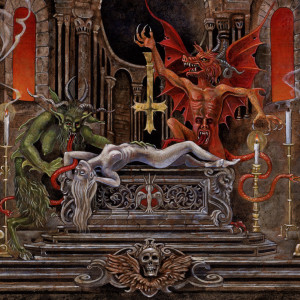
Profanactica – Thy Kingdom Come (2013)
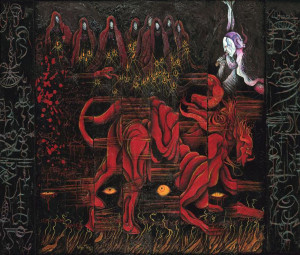
Serpent Ascending – The Enigma Unsettled (2011)
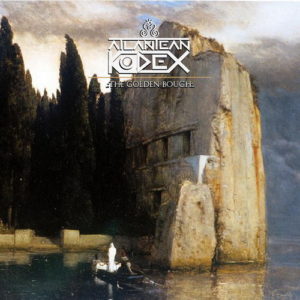
Atlantean Kodex – The Golden Bough (2010)
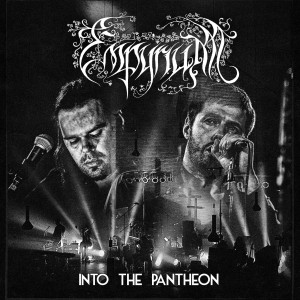
Empyrium – Into the Pantheon (2013)
Written on the morning of the 22nd, April 2016, close to the land where the sun rises, while listening to Iron Maiden’s ‘Somewhere in Time’.
Notes
1 Theories on the origin and underlying nature of reality in physics and chemistry continue to remain metaphysical even if supported and represented in equations. This is an important point towards realizing the limitations of quantification-based science and the illogical idea that if one cannot measure something visually with a ruler then it isn’t relevant.
2 The idea of genetically-based mental faculties is ignored and frowned upon by modern dogma. It is detested and rejected despite severely inconclusive experimental data demonstrating natural differences, not a lack of them. An emotional vilification ensues because the idea of inherent (and therefore beyond our control) differences in capacity does not bide well with the religious commandment that “All men are created equal.” This same idea has been upheld by pseduo-scientific theories produced under both democracy and communism, political paradigms that are themselves entirely dependent on the truthfulness of this concept. It is difficult to avoid seeing a clear conflict of interests here; an out-of-hand scientific protectionism of dogma through sponsored and biased logistic and political support is the rule.
3 The perception of patterns and the effects of music through their interaction with our biological make-up in the ever-moving sequence of its unique states in time.
6 CommentsTags: Atlantean Kodex, Black Metal, death metal, divine eve, empyrium, genre, modern metal, Philosophy, post-modernism, profanatica, progressive, pseudo-progressive, quality, Serpent Ascending, The Enigma Unsettled, tradition
Profanatica have revealed the art and track list for their upcoming album The Curling Flame of Blasphemy. One of the few fruitful artists in current metal and a mainstay of our best lists, drummer Paul Ledney (also a founder of Incantation) and guitarist John Gelso have spent the third millennium refining the first wave.
Track list:
1. Ordained in Bile
2. March to Golgotha
3. Magic & Muhr
4. Black Hymna
5. Host Over Cup
6. Rotten Scriptures
7. Yahweh Rejected
8. Bleed Heavenly Kingdom
9. Vile Blessing
10. Curling Flame
Track six, “Rotten Scriptures” may be previewed on Hells Headbangers Compilation Volume 8.
Scheduled for an early summer release, the frequently “funderground” label promises that The Curling Flame of Blasphemy will be another:
13 CommentsTags: 2016, Black Metal, death metal, havohej, hells headbangers, incantation, metalucifer, news, paul ledney, profanatica

Article by David Rosales
As another year ends and a new one begins, many “best of” lists pop up here and there, among them our own here at DMU. While others may be eager to know about what is ever new, we are more interested in what stands the test of time. Today we will look at some albums that were highlighted here as the foremost products of the year 2013, which was a year of renewal, great comebacks, startling discoveries and a general wellspring of inspiration. In the opinion of this writer, 2013 has been the best year for metal in the 21st century.
To start off, we shall pay respects to long-lasting acts with a black metal background, namely Graveland, Summoning and Burzum. While the last has left the metal camp for good, its approach and spirit is still very much enriched by the essence of the deepest metal infused with transcendental values. Summoning is still doing their thing, ever evolving, trying a different permutation of their unique style. Fudali’s project has become the warrior at the frontlines of the strongest nationalism grounded in music that uplifts the heart with an authentic battle feeling (as opposed to those other bands playing funny-jumpy rock and acting all “dangerous”).
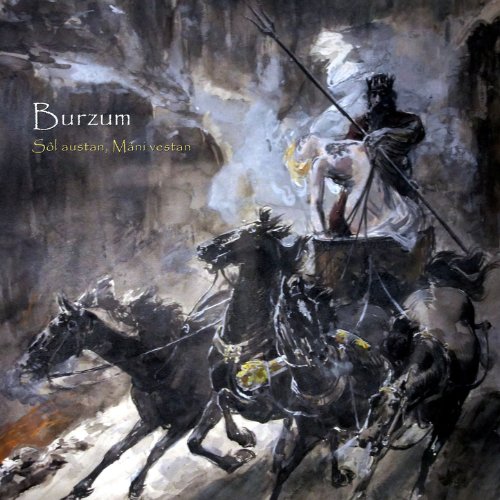
Sôl austan, Mâni vestan is an ambient affair that uses short loops which revolve around clear themes in each track. The approach is a little formulaic, thereby limiting the experience with a feeling of repetition. However, as with many good works of art, this self-imposed canalization serves to speed the result in a direction. As with a lot of Burzum’s work, this is a concept album that must be listened to as a whole. When this is followed and one stops looking for novelty and instead concentrates on the details that bring variation within the familiar landscape, the somewhat arduous experience brings great rewards once the summit is reached and the journey is taken more than once.
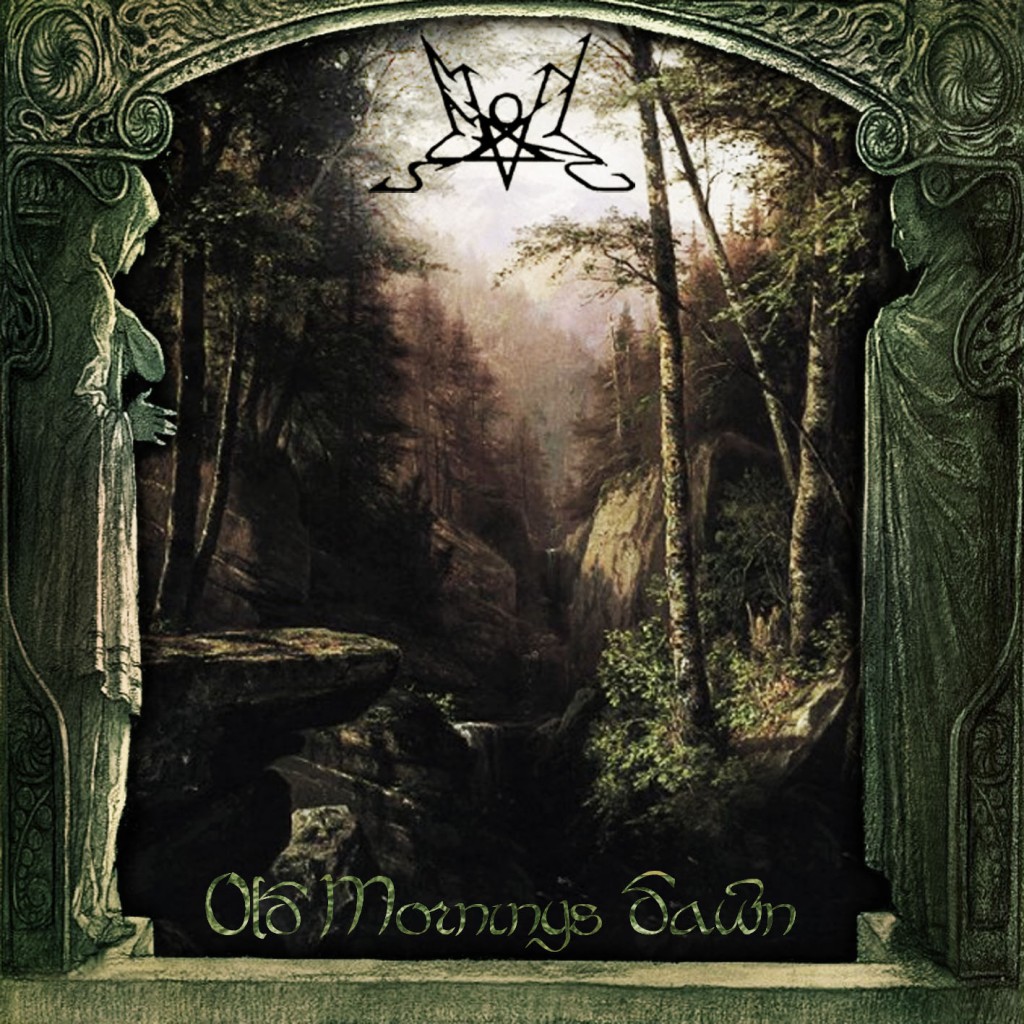
Something similar can be said of the slightly pop-minded Old Mornings Dawn. This effort by Summoning certainly lacks the density of their masterpiece, Dol Guldur, but is no less effective, although perhaps shallow. But what isn’t shallow when compared to that masterpiece? As with every Summoning album, Old Mornings Dawn has a very separate personality, and in this case, it is one of heroism, light, regeneration and hope. Something that will never leave the band’s trademark sound is the deep feeling of melancholy and longing for ruins.
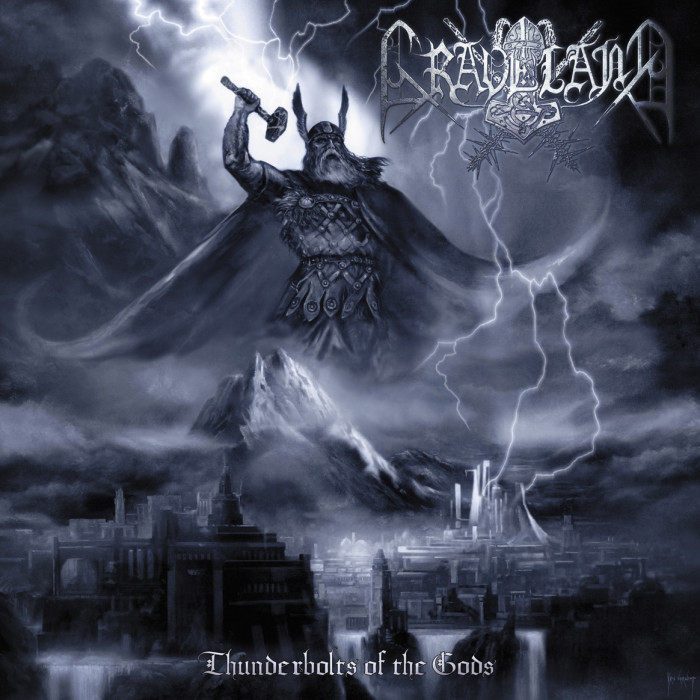
Graveland materializes in Thunderbolts of the Gods one of their most warlike efforts to date in a smooth trajectory that has gone from rough-pagan to long-winded and epic to heroic war music. What raises this offering above others in Fudali’s current trend is the awesome bringing forth of destructive energies mustered in the imposing drumwork. Gone are the clumsy rhythms of Cold Winter Blades and the redneckish tone of the (nonetheless great) album Following the Voice of Blood. This is the technically polished and spirit-infused summit of this face of Graveland.
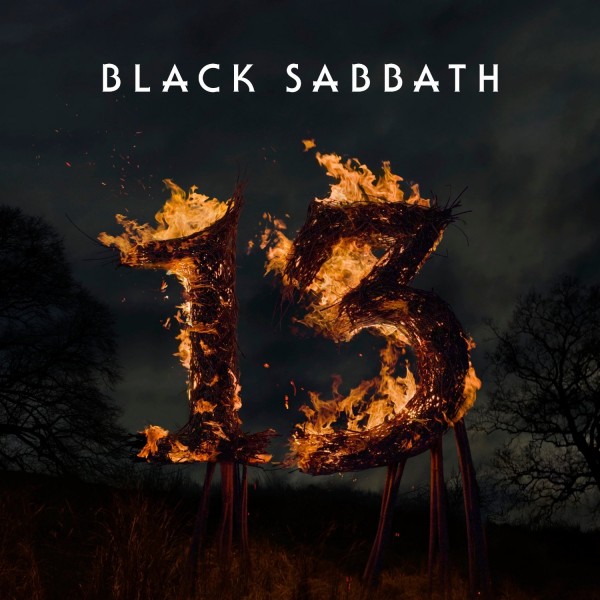
One of the most deserving releases of 2013 was Black Sabbath’s 13. More expectations could not have been placed on anyone else. Yet the godfathers of metal delivered like the monarchs they are: with original style, enviable grace, magnificent strength and latent power. Along with the last three albums just mentioned, this album shows itself timeless in the present metal landscape. It encompasses all that it is metal, and brings it back to its origin. This is an absolute grower which will age like the finest wine and is, in my opinion, the album of the year of 2013.
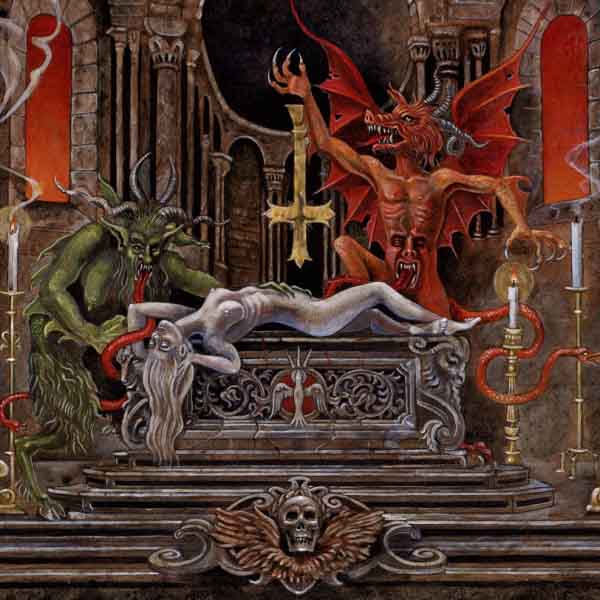
In 2013, Profanatica finally achieved amazing distinction with Thy Kingdom Cum, which can be considered the fully developed potential of what Ledney presented in the thoroughly enjoyable Dethrone the Son of God under the Havohej moniker. To say this is the natural outcome of Profanatica’s past work is as true as it is misleading in its implications. This is not just a continuation of what the band was doing before, but a deliberate step, a clear decision in the clear change in texture quality that means the world in such minimalist music where a simple shift in technique or modal approach defines most of the character of the music.
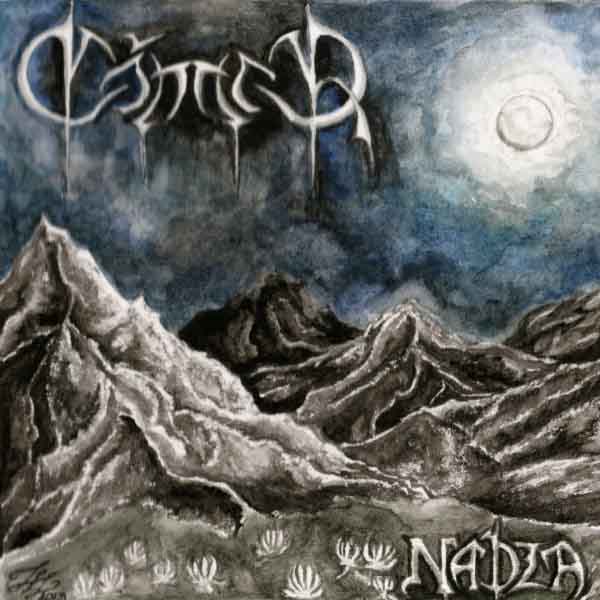
Cóndor’s Nadia was probably the hidden pearl of the year. Never mind the metaphor of the “diamond in the rough”, there is nothing rough about this. It is polished, but it is hidden. The shy face of this beautiful lady is covered by a veil that turns away the unworthy, the profane! This is immortal metal artwork which to uninitiated eyes and ears seems but like the simple, perhaps even amateur, collection of Sabbathian cliches and tremolo excuses of an unexperienced band. The knowledgeable and contemplating metal thinker recognizes the Platonic forms under the disfigured shapes.
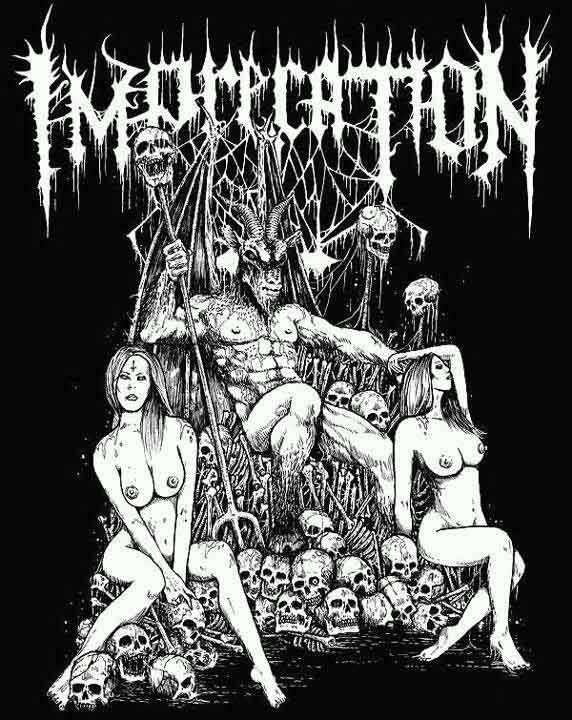
Imprecation’s Satanae Tenebris Infinita and Blood Dawn by Warmaster draw our attention to the strong presence of a more humble but profoundly (though not obviously) memorable album and EP. These will stand the chance of time, but will not necessarily remain strong in the mind of a listener in a way that he feels compelled to come back to them often.
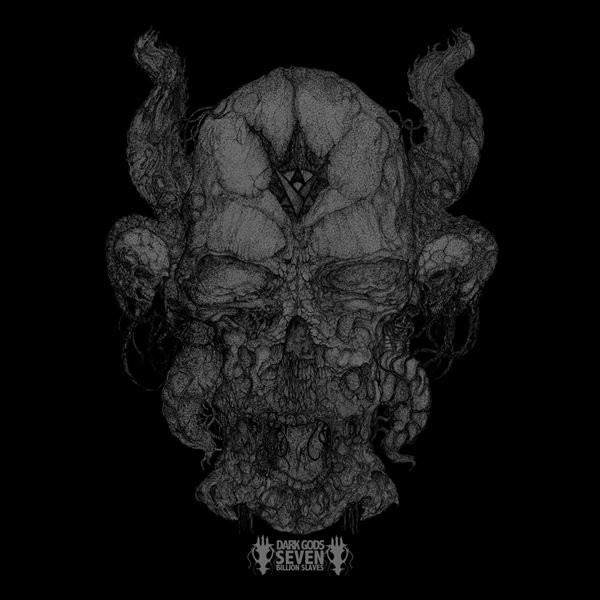
Dark Gods, Seven Billion Slaves by VON seemed more enticing at the time. It’s definitely a solid release, but it is however a very thinly populated album with more airtime than content. Whatever content it has is also not particularly engaging. The enjoyability of this one is a much more subjective affair and like a soundtrack is more dependent on extra-musical input from the listener’s imagination.
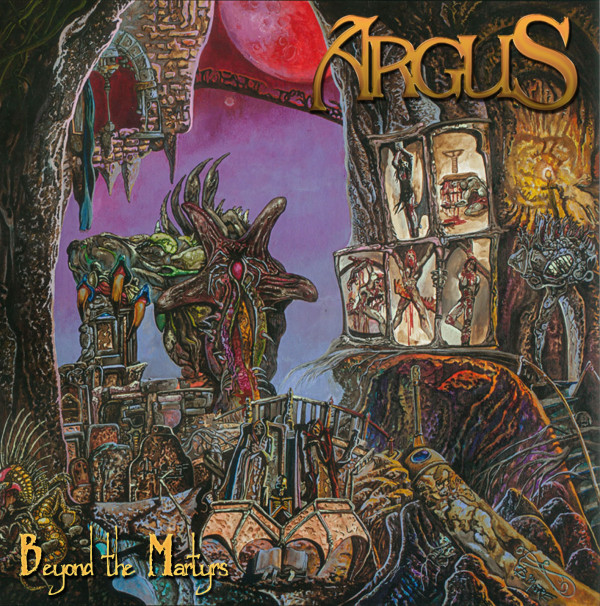
As delightful as the three heavy metal albums Argus Beyond The Martyrs, Blitzkrieg Back From Hell and Satan are, the intrinsic qualities of their selected subgenres makes them a difficult candidate for long-lasting and profound impact. That is not to say they have no lasting value. If anything, these are albums one can come back a thousand times and perhaps they will not grow that much, but they will never truly grow old.
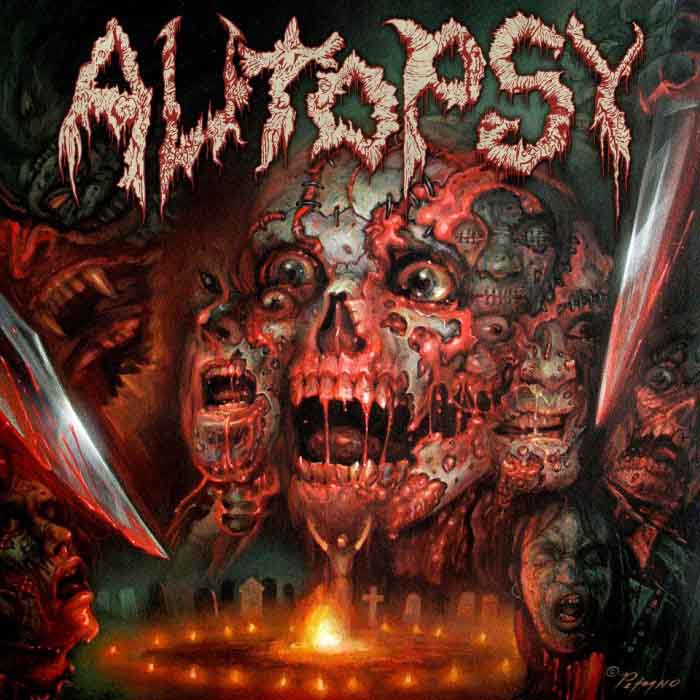
Autopsy’s Headless Ritual is one of the strongest yet most understated albums of the year. The extremely rough character of the music may contribute to how it carelessly it can be left behind. Fans of brutal music will find it little different from the rest and will quickly forget it. Fans of wider expressions and deeper thoughts will pass it by with little interest. Such is the tragedy of this very respectable album.
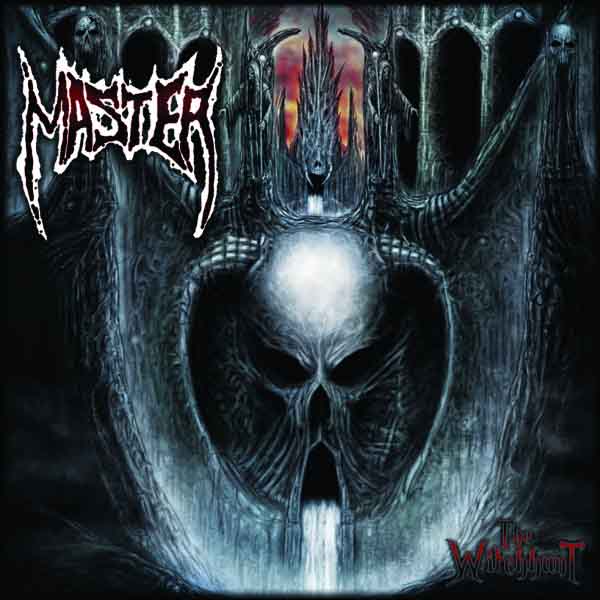
A few stragglers in this group; Master’s The Witchhunt, Centurian’s Contra Rationem, Derogatory’s Above All Else, and Rudra’s RTA proved to be more impact and potential than manifest presence. These will remain fun and quaint for a very occasional listen, perhaps even a sort of throwback feeling, but lacking the long-lasting impact of others in this list.
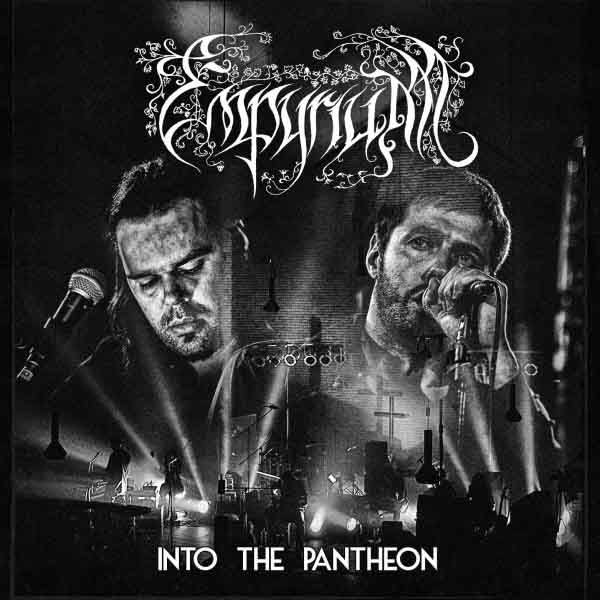
A special mention is deserved by Into the Pantheon, the essential synthesis of Empyrium, being their most revealing, powerful and clear release. While not outwardly metal, this live recording everything that is to be metal at the level of character and spirit. As such it is the perfect closing note for this recapitulation and reevaluation of past selections.
27 CommentsTags: argus, autopsy, best of, Black Metal, black sabbath, burzum, condor, death metal, empyrium, graveland, imprecation, master, profanatica, re-review, subjective, Summoning, underground metal, von
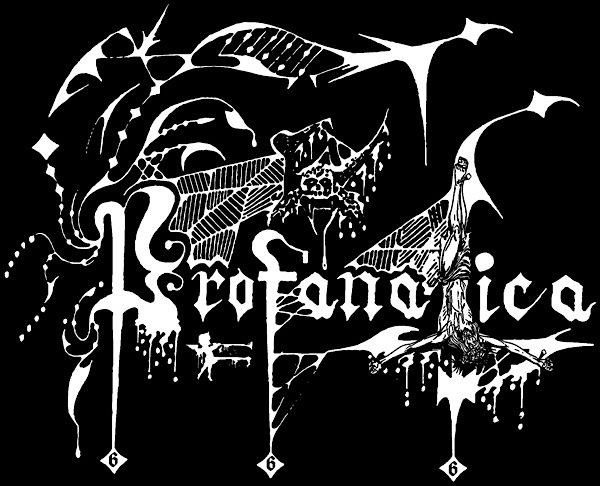
Article by Lance Viggiano
Black metal emerged as a reaction to the trend of death metal which had already established a musical vocabulary and through that achieved a higher degree of technicality as well as abstraction.
These bands took inspiration from the proto-black Hellhammer, Venom, Bathory and Sodom. The music of these early hybrid bands was quite unlike what became the second wave of black metal or death metal in that its motifs were simple yet concrete; overlaid onto a structure which juxtaposes seemingly unrelated motifs next to one another in an uncomplicated and often superficially nonsensical form. Yet, the result was surprisingly successful as a visceral and chaotic experience of raw, concrete, sensory imagery.
The black metal to follow refined this approach through retaining much of the simplicity and visceral nature of the earlier music while placing the motifs in a more logical format through phrasal composition, in which each riff has a shape created by its phrase and these form a language within each song. This and the trademark atmospheric riffs driven by waves of reverb and tremolo picking – largely invented by the Norwegian bands of note – came to define the public perception of black metal as a genre. Consequently, the Norwegian sound moved away from the rhythmic lineage of rock to music to something closer to the traditional western sensibility: harmony and melody over static, invariant rhythm as famously codified by the experimental gothic sensibilities of Transilvanian Hunger.
Profanatica, from what can be intuited from rare interviews, had strong reactions towards both the Norwegian sound and death metal itself. As such their music took on a different character which has not garnered the band near as much acclaim. The Norwegian sound is, after all, is the standard against which all black metal music is held. Given the fact that all genres are imposed by observation after the fact, it seems that the difference between Profanatica and the Norwegian giants is not one of quality, but of a band not fitting within the aesthetic boundaries of a genre that the audience expects. That and the mad rush for Norwegian black metal pushed Profanatica to the boundaries of the black metal movement where its influence on artists and hardcore fans tells a different story of its importance.
Much like the Norwegians, Profanatica refined the approach of its influences by emphasizing an incoherent structure and seemingly random construction. The motifs themselves are anything but abstract; often sounding vaguely familiar if not recycled both literally and intuitively. The listener will detect a clear sense of familiarity with the image of a particular motif, yet its contextual placement is such that it reveals a new perspective on something familiar. To draw a metaphor, it is as if one obtains a view of the same landscape from the peak of different mountains. This freedom of association allows a particular feeling, idea or image to be used as appropriate, anywhere in a song without sounding out of place. That particular innovation is unique to this band alone.
Structurally, Profanatica develop the proto-black method by emphasizing its motif contrast and non-rational composition. The infamous “Weeping in Heaven” demonstrates this technique through a collection of riff ideas which bears little relationship to one another, nor are treated in such a way that might cause the music to blend seamlessly. The contrast is emphasized which leaves the listener in a position to experience the music on an intuitive level. The result speaks to the body and it speaks towards the id. Logical progression, causality and abstract musical language are rejected abjectly. Profanatica embraces the rhythmic tradition of non-Western forms; using it to give meaning to chaos and incoherence of raw experience. Where one might perceive conceptual weakness and compositional immaturity in the early black metal music, Profanatica matured their approach to the point of strength.
The greatest contrast between the Norwegian sound and their influences lay at the relationship between the subject and the perceiver. The musical component of the proto-black bands described the emotional reactions to a phenomenon portrayed, resulting in the internal discourse one expects when reacting to the representations given to them by their nervous system. The Norwegian sound attempts to paint the external world through its musical discourse. The valuations of the perceiver are never absent quite absent and serve to describe the relationship of the internal world to the external. It asks the question, “where do we fit in the image of the world as presented?”
In a sense it attempts to categorize a dark forest in nonverbal symbols. Profanatica, resting firmly in the proto-black tradition, presents the terror of a solitary human being in a forest without describing the forest itself through its musical symbols. The dialogue then, becomes a matter of internal sensation which is untamed and instinctual. In terms of artistry, that innovation ultimately expanded the initial range of expression without reasoning categorically about it.
The effectiveness of this particular approach may be observed on the medley from the Grand Masters Sessions release. The track consists of portions of the band’s demo material stitched together to form a single track. A listener familiar with Profanatica’s back catalog will no doubt sense the familiarity of the material yet what is most striking is the functionality of the piece as a whole. Despite being composed from entirely different songs, the song involves juxtaposition of each motif and its partial ordering, and as a result manages a level of unity as a stream of consciousness which reveals new perspectives on the material through context.
Profanatitas de Domonatia (2007) distills the familiar Incantation sound made famous on their debut record Onward to Golgotha – which Paul Ledney had a strong hand in developing – by stripping the material down to its most basic instincts. The result is a fierce and destructive force of will whose aim is deconstruction. The follow up Disgusting Blasphemies Against God saw the band barbarizing the famous emotional sensitivity of black metal’s melodic heritage and assembling those remains into hideous totems. The record’s defining characteristic is, after all, something of a crescendo implying the process of construction, perhaps out of the remains of that which its predecessor tore down. The latest record, Thy Kingdom Cum, lays siege to its two previous approaches by simplifying its rhythms to the point of idiocy while contorting its melodic forms to the point of mockery. The defining character of its predominant motifs is laughter which can be gleaned easily in the opening moments of the track “False Doctrina.” The aforementioned qualities are not something which need to be abstracted from the music; they are clear and obvious.
Profanatica’s approach is much like an uncivilized warband conducting raids on the civilized. Such groups are as much a tribal patchwork out of violent young men as they are a patchwork of the spoils of their activities: contradictory compositions of the basic human and technological components of a greater civilization whose assemblage is entirely pragmatic and allows for them to serve functions other than intended, but no less effective than their original purpose. Out of elements bound tenuously is something effective, something purposeful, something deadly. The world this music operates in is one which is defined almost entirely by nature rather than one defined by humans.
Where proto-black metal is defined by its visceral nature and deconstructive character, Profanatica embrace the ignorance in a brash display of unconcern for the perfume-soaked intellectuals which decry those outside their borders. Dwelling within the primitive backwater fringe has its advantages by bearing immunity to the abstract and desperate silliness of the rest of the genre. The similarly-goaled war metal attempts to reach back into black metal’s foundations but does so in a way which reduces the motif as an objectified emotion or image into pure texture reducing its communicative efficacy. The work of Ledney and company retains the concrete sensory experiences which drove metal in each of its original incarnations and were later given musical scrutiny before completely fossilizing, allowing their art to pick the last of the low-hanging fruit of metal as a form while others languish in petty revivalism, soulless displays of technical mastery, or vapid experimentation that desperately seeks revitalization by looking to external music genres; copying but not transforming its clichés.
Tags: 2015, American black metal, Black Metal, death metal, guest author, paul ledney, profanatica
Wearing the mantle of blasphemous black metal, Goatblood play metal in the time-honoured tradition of grind-tinged black metal dancing the line between Sarcófago and Blasphemy. As most bands playing this style, Goatblood is automatically benefited by the immediate focus this restricted expression affords: a clarity in direction in accordance to its single-mindedness. Songs are consistent in expression as well as coherent in their narrative, blasphemy overspilling and music driving it — not quite deep enough.
The only obstacle towards excellence faced by Goatblood here is they are too content, or perhaps too shy, about developing songs. Most of them stop after a handful of simple riffs, ending not in a closing gesture a climax or even a complete development but an apparently arbitrary riff after which the band had no idea (or no time?) what to write. Rather than the defilement of Profanatica, Goatblood only half-whispers hidden desires to break free from dogmatic religion. Not brave enough to move forward, Adoration of Blasphemy and War is a collection of half-songs, or ideas for songs that have not yet been completed.
No CommentsTags: 2015, Adoration of Blasphemy and War, Black Metal, blasphemy, Goatblood, profanatica, sarcofago
Underground survivalist label Hells Headbangers has released a free digital music compilation entitled Compilation Volume 8. Featuring cover art by maniac visualizer Antichrist Kramer in clear homage to Blasphemy Fallen Angel of Doom, the compilation provides free listening to introductory tracks to a number of bands from new and old undergrounds alike.
Hells Headbangers described it thus: “30 TRACKS TOTAL featuring brand new songs from upcoming albums by DEATHHAMMER, PROFANATICA, DEIPHAGO, DESTRUKTOR, NYOGTHAEBLISZ, CIANIDE, SCYTHIAN, BARBATOS, NOCTURNAL BLOOD, DIAVOLOS, BONEHUNTER, PERVERSOR, ABYSMAL LORD, and NEXUL, songs from newer EP releases by FORCE OF DARKNESS, DEMONA, The HAUNTING PRESENCE, DWELL, SHED THE SKIN, as well as material from earlier releases in 2015 and mid-late 2014 by SATANIC WARMASTER, GOAT SEMEN, ATOMIC AGGRESSOR, ABOMINATOR, DESTROYER 666, OCTOBER 31, AEVANGELIST, PERDITION TEMPLE, EXECRATION, GOUGE and The LURKING CORPSES.”
No CommentsTags: abominator, abysmal lord, aevangelist, antichrist kramer, atomic aggressor, barbatos, bonehunter, cianide, death metal, deathhammer, deiphago, demon, destroyer 666, destruktor, diavolos, dwell, execration, force of darkness, goat semen, gouge, hells headbangers, nexul, nocturnal blood, nyogthaeblisz, october 31, perdition temple, perversor, profanatica, satanic warmaster, scythian, shed the skin, the haunting presence, the lurking corpses
Among the many questions that journalists have struggled to answer, the fascination of some rock music and most heavy metal with Satan has ranked highly among them. Some take the pejorative view that it exists merely to offend, but others see in it the desire to create a counter-narrative or opposing philosophy to modern society itself.
Gavin Baddeley, a journalist who covers rock and populist metal alongside occult topics, delves into this project with a book that is both flawed and highly informative. Like a high school text, it begins with a history of Satanism and the occult with a focus on biographical fact and salacious detail more than philosophy. This gives us a vague view of Satanism that keeps the mystery alive, and nudges us toward the LaVeyian view. In this, the paradox of Lucifer Rising: Sin, Devil Worship & Rock ‘n’ Roll reveals itself: it is a journalistic exploration of the surface, namely what people say about the phenomenon of Satanism in music, not an explanation of their motivations.
Witness for example this exchange with Bathory’s Quorthon:
How did the Satanism get into your music?
When we first started, we had no ambitions to make records or write songs — we just wanted to cover Motorhead songs, because that’s what we’d grown up with. We’d just left school, so while other bands sang about drinking beer, fucking women and riding motorcycles, we didn’t know anything about any of that because we were too young. But we did have an innate interest in the dark side of life. It wasn’t purely Satanic from the beginning, it just grew into that. It was a protest, revolt thing — we knew it would upset people one way or another. If you look at it today, it all seems so very innocent. The main inspiration came from a Swedish horror comic called Shock. It was just the blood and gore thing, with a tongue-in-cheek approach…I didn’t have much of an academic knowledge of Satanism, though that came later as I got deeper into it. I started reading into the Christian side of it, too, which is when I decided that it is all fake, so the Viking elements started coming into my work.
This book is paradoxical because while it explores Satanism as a phenomenon, it accidentally hits a lot of other interesting notes about rebellion in general and the dislike of modern society held by metalheads. Its strength lies in its interviews with many leading figures not just in heavy metal but in various forms of occult rock and populist shock-rock. Once the reader gets through the Wikipedia-level introduction to Satanism through famous people accused of being evil, the book runs through a competent history of evil rock music and heavy metal, touching on the important acts with an uncanny ability to find thought-leaders in this area.
As it ventures further into heavy metal, this volume provides a detailed exploration of the death metal and black metal years which recite the major facts, provide some new details, and avoid rampant speculation. At this point as a reader I found myself liking this book, despite having been annoyed by the first chapters of history, and found its insights were greater than one would expect from a journalist outside of underground metal. There are some missteps but sensibly Baddeley allows the book to essentially trail off into interviews with interesting people who are vaguely evil, and does not police forms of Satanism to enforce an agenda. Thus the paradox again: a surface view of Satanism, but many ideas are allowed to emerge to show us the background thought behind those drawn to this general direction, even if no coherent philosophy emerges and so most of it seems like a trash heap of comedic contradictions, bold assertions, mistaken and inverted Christian notions and the like.
Some moments are simply good humor, such as this interview with the legendary Paul Ledney of Havohej/Profanatica/Revenant/Incantation:
What do you think of love?
I don’t know — I love sodomy
Many of the interview questions are excruciatingly obvious and repeated, but this is how Baddeley breaks down his subjects and gets them to finally articulate the core of their thinking on an issue, much like frustrated people often give the best summaries of an idea after they have tried to express it repeatedly to others. This both provides some insight, and creates a lot of redundancy in the interviews which add to the confusion of the topic and the consequent tendency of the reader to zone out. Still there are some exceptions, like this cutting to the chase with Varg Vikernes of Burzum:
Why do you and Euronymous have such a great hatred of the Church of Satan?
Satanism is supposed to be something forbidden, something evil, something secret, something people don’t know anything of. You go to America and in the telephone directory you can see ‘Church of God,’ ‘Church of Jesus’ and ‘Church of Satan.’ You call, and a woman answers, ‘Church of Satan, may I help you?’ You think, ‘This isn’t Satanism! Some stupid fuck is trying to ruin everything.’ The superstitious part of it falls apart. The Church of Satan deny Satan, they say He doesn’t exist, yet they act as if He did, they rebel against God. They call themselves Satanists because He also rebelled against God, but they’re basically light- and life-worshipping individualists.
How interesting that he picked up on individualism as the dominant trait of mainstream Hollywood Satanism. It is as if the ultimate rebellion is to transcend all barriers, including the final one in the self. The interviews in this book are often like metal itself, half amateurish lazy drop-out and half insightful dissident looking for a way outside of the tenets of modern society. In that much of the value of this book emerges, not so much as a study of Satanism itself but as a look at the psychology of opposition, with Satanism as a helpful focus that covers for the real story, which is a revelation of discontent with the philosophies of our time. While Lucifer Rising: Sin, Devil Worship & Rock ‘n’ Roll does not dig deeper than that, as a read-between-the-lines experience this book is worth its weight in gold and reveals far more than it could under its ostensible topic.
21 CommentsTags: Bathory, Black Metal, gavin baddeley, havohej, Occultism, profanatica, quorthon, Satanism, varg vikernes
It is a seldom-known fact that you get more of what you allow to exist. In a musical community, this means that whatever albums sell enough to attract some audience will produce imitators.
(more…)
Tags: beherit, best of, blaspherian, blotted science, demoncy, divine eve, graveland, profanatica, sammath